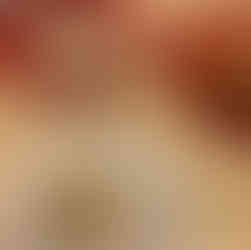Kyoto 2023
- Dee Dee Lim
- Jul 12, 2023
- 7 min read
Updated: Mar 10
This summer, I had the opportunity to explore Kyoto for a week. I went through a week being inspired, endlessly discovering, and constantly creating.
I stayed at Maana Kiyomizu, a modern, carefully curated apartment tucked in a quiet neighborhood south of Gion. Most of the pieces displayed here are hand-made by Japanese. I couldn't help but feel and touch each of them.
Pieces of Japan

Handmade ceramic round vase by Gaku Nakane Gaku Nakane, the 26-year-old potter, was raised by artisan parents in the idyllic countryside of Shiga prefecture. Each of his pottery pieces is made by layering two types of clay. When firing, the discrepancy in shrinkage between the two layers creates a unique crackled pattern on each vessel and sculpture. Gaku hopes to bring warmth and charm to homes near and far through his work.

Nankei is a family run Ceramic House based in Yokkaichi City in Mie Prefecture. They specialise in ‘Bankoyaki’ style pottery, with their signature products being ‘Kyusu’ teapots. Their history dates back to 1940, and Nankei was officially opened in 1972 by brothers Hiroshi & Yoshihiko Araki. Their teapots are made from clay which is high in iron content. Iron is considered to enhance and mellow the flavour of Japanese Green Tea. They don’t glaze this inside of their teapots to promote this effect.
Maana's owners have a retail store POJ (Pieces of Japan) next to the apartment that brings out the stories of Japanese craftsmen. Here, I learnt the first steps to Kintsugi and started my appreciation for the material Urushi.
When I was asked what I know about Kinstugi at the class, I responded, "Not much at all. To me, it's about fixing a piece when it's broken. Instead of throwing something away and buying something new, you fix it and use it forever". To me, that's how we should treat everything around us in life. There is beauty and romanticism in surrounding yourself with objects that will be with you for life.
A few days later, I found this quote on a website:

I also love this paragraph in a book I bought at Tsutaya Daikanyama, Tokyo:
"When I work with Kintsugi, I feel harmony with nature. The multiform arts of lacquerware, including kintsugi, employ processes using the sap of the lacquer tree. When I consider this fact, I feel profound gratitude and respect for nature."
- Hiroki Kiyokawa, The Spirituality of Kinstugi
About Urushi 漆
Urushi is made of the purified sap from the trunk of the urushi tree 漆樹. Urushiol, the main component of the sap, oxidises and hardens, making it highly durable, water resistant, insulating and antiseptic. During my Kintsugi course, I learnt that Urushi is also the ingredient to glue broken ceramic pieces together, which is also the material used on lacquerware. Here are a few urushi artists I've found at the Kyoto museum of arts and crafts and Tsutaya Books. I truly respect their dedication to ensuring this craft is not lost and is protected. Thank you.
My biggest inspiration was when I had the morning at ASAHIYAKI, watching a demonstration of a Master Potter throw a bowl, then experience throwing Asahi's clay on my own. I threw 6 bowls from the 1kg of clay, and chose 3 that Asahi would trim and fire for me in their climbing kiln. They will send the fired pieces to me in 3 months. I am full of anticipation and I am extremely grateful for this invaluable experience.
About ASAHIYAKI 朝日焼
ASAHIYAKI is located in the Uji region of Kyoto Prefecture where is known as the center of tea culture, just across the Uji River at the foot of Mount Asahi, opposite the Byodo-in Temple. ASAHIYAKI started the pottery works about 400 years ago during the Keicho era (Momoyama-Edo period) under the guidance of Kobori Enshu. It is regarded as one of the "Enshu Seven Kilns(Enshu nanagama)". In the times tea masters such as Sen-No- Rikyu and Kobori Enshu were active, the first kiln master Tosaku uses Mt.Asahi pottery clay, created tea utensils such as tea bowls and fresh-water containers that are favored by daimyo, official residences and tea masters. Asahiyaki has insisted on employing clay deposited solely within the Uji region for generations. Previous to the Meiji era, this clay mined from Mt. Asahi and the kilns were originated from the name. Presently, the clay are taking from the Shirakawa and Mt. Orii where most of the area are covered with tea gardens, located on the opposite side of Mt. Asahi. The clay may be said to constitute the life force of Asahiyaki and it is derived from a layer of sediment deposited in distant antiquity by the Uji river. The mined clay is left for aging over a half century before use. The clay used for the pottery now is what the ancestors excavated, and the clay collected by present generation is laid to weather for the grandchildren.
I did not plan most of my days in Kyoto. When traveling, I enjoy walking, discovering and experiencing episodes of chance encounters and serendipitous moments. That was how I came across Kanjiro Kawai's house. I was walking around the neighborhood when I chanced upon a sign pointing to a potter's house.
Kanjiro Kawai’s House is a museum dedicated to the life and work of the modern Japanese potter and ceramist (1890 - 1966). It was fascinating to walk through a house and see a climbing kiln at the courtyard.
An emotional moment overtook me when I read this sentence from his book, " Anyone can make beautiful things, says Kawai-san. The capacity for expression and creation is with everyone, but not all of us realize this. We work and produce in spite of ourselves. The unknown self drives us on always.".
Kawai Kanjiro 河井寬次郎

Kanjiro Kawai was born in Shimane prefecture and was one of the founders of the Mingei movement to promote Japanese folk crafts. He quickly became a famous master potter and ceramist of his times.
The last part of Kawai’s career was called "infinity work" where he explored the parts of the human body, such as the hands, as well as the infinite range of human expressions. His fame exceeded the frame of the ceramic field, and he was also a talented and acknowledged writer, philosopher, sculptor and wood carver.
Did you know that Raku is not merely a technique in pottery firing, but it's named after a family who started the technique of hand building a chawan and firing it using binchotan charcoal in a custom built kiln?
I visited the Raku museum on this trip. As I looked at the family tree, I was surprised to learn that the Raku family is still alive and carrying on its artisanal tradition of making raku ware. The Raku museum is beautiful, with raku ware displayed that have been made over 15 generations. To think that adjacent to where I visited, the 15th and 16th generation of the family are still making raku ware, with the special kiln not far from where I was.
I thought about the immense pressure one must feel if born in the Raku family, having to retain the family and country tradition yet pushing for innovation within a set of constraints. When I returned, I read the journal by Kichizaemon Raku XV and watched a short clip about Kichizaemon Raku XVI. This further elevated my respect for the Raku family.
The Raku Family
Raku ware was born out of an unprecedented methodology and technique.
However it was not called Raku ware when Rikyû and Chôjirô were active.
It was initially called Ima-yaki, “now wares”, wares produced at the present time, that is to say, tea bowls that looked avant-garde. They were subsequently renamed juraku-yaki, “juraku wares”, due to the fact that the Raku home was nearby the Jurakudai Palace and also Sen Rikyû who lived inside the premises of the Palace was a central figure to the birth and the promotion of Chôjirô's tea bowls. Jurakudai was a palace built by Toyotomo Hideyoshi (1537~1598), the leading warrior statesman of the time, and was one of the greatest symbols of his age.
Juraku-yaki was eventually abbreviated as Raku-yaki, Raku ware. It is believed that Hideyoshi presented Chôjirô with a seal bearing the Chinese character for Raku.
Raku then became the name of the family that produced these wares.
This is the only example in the history of a family name becoming synonymous with the ceramics they produced. Now Raku ware has become a general term for a type of ceramic technique globally known and practiced. However, at first it meant just wares pioneered by Chôjirô together with Rikyû and practiced exclusively by the Raku family.
Hermes' episode with Kichizaemon Raku XVI
Books are dear to me and each time I travel, I will bring back memories in the form of books. Here are the books I purchased during my trip.

About the Books
U-Tsu-Wa
Issey Miyake held an exhibition of works by Lucie Rie, Jennifer Lee and Ernst Gamperi in 2009 at 21-21 Design Sight, designed by Tadao And. Issey Miyake found out about Lucie Rie's work one time when he was in London and he went to visit her at her house in England then.
The Spirituality of Kintsugi by Hiroki Kiyokawa
A beautiful book about Kintsugi - what it means to him, what it is, the process of it by Kinstugi artisan, Hiroki Kiyokawa
Beyond the Frame
An exhibition catalogue that was given to me by Asahayaki. This is an exhibition that was held of the works of Asahiyaki's 16th generation, Hosai Mastubayashi. Really beautiful ceramic works.
The Asahi Pottery in Uji
This book talks about the history of Asahi pottery, the pottery I visited in Uji, Kyoto. There is a lovely story in there about how they visited England and found out that their uncle help built a climbing kiln for Bernard Leach in St Ives. They also found works in V&A and British museum by their previous generations.
We Do Not Work Alone by Yoshiko Uchida
A very touching book about conversations over tea with Kawai Kanjiro
Chawanya by Raku Kichizaemon XV
This is a really touching, inspirational and beautiful book. Each page shows a piece of Raku ware made by Raku san, accompanied by a poem that he wrote, which brings us through the journey of his challenging life.
Lastly, I love Japanese comfort food. My most emotional moment was when I tucked into a very simple dish of Omurice. The taste of good Omurice welled me up as I remembered Chef san dancing in front of the stove whenever he makes this makanai for me. I worked at Yumi Japanese restaurant 4 nights a week in Edinburgh for 3 years over college. Chef san and Yumi san were like parents to me. Omurice was my favorite dish. Even though it is a simple dish, Chef san would often conjure up the anticipation with his dance whenever he cooked this dish, knowing that it's my favorite food.
Here are some photos of my other favorite comfort food I had during my trip.
Top: Curry rice, Green tea soba, Obanzai
Middle: 9 types of Tofu, Chawanmushi, Ramen
Bottom: Ochazuke, Oden, Omurice






















































Comments